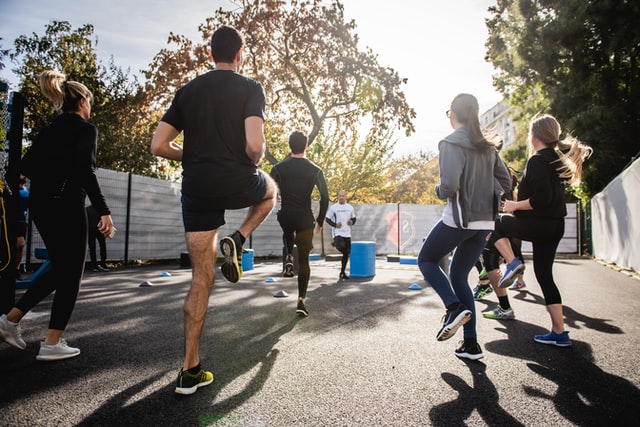Exercise is an important aspect of personal health that improves not only a person’s physical body, but also improves their mood, and boosts their brain’s cognitive capacity. Physical exercise is especially important in young people to help their bodies grow strong and to fuel their minds to be able to pay attention and learn.
PE class has been fundamental at schools across the world since formalized education began, but teachers who don’t teach PE or coach rarely consider how they could use the cognitive benefits exercise conveys in their classroom. However, recent research suggests that exercise could even be used to boost students’ test scores
Occasionally, teachers will give students stretching breaks or have them do jumping jacks to wake them up, but how beneficial are these short bursts of activity really? Recent research into exercise’s effects on cognition has revealed that short bursts of even 10 minutes of full body physical activity can measurably boost students’ mood and their brain’s executive function, but only if it is the right type of activity.
New Research on Coordinated Physical Activity
Research from the University of Tsukuba in Japan revealed that brief bouts of exercise can affect students’ ability to perform tasks due to increased executive control as well as having the bonus of improving their mood. (Damrongthai et al.) Researchers had participants run on a treadmill for ten minutes and then gave them a series of cognitive tests.
One, called the Stroop Task, requires the participant to say the color ink used to write a color word that doesn’t match. For example, the participant would see the word “Yellow”, but written in blue ink. The task requires the participant to say “blue” despite seeing the word yellow written.
This is one of the most widely used tests for executive function as it requires a person to ignore and filter out one piece of information while focusing and acting on another. The interference of the mismatching information caused in the brain requires focus and attention to overcome, and so is a good measure for the brain’s executive functioning ability.

Previous research has already shown a connection between exercise and better cognitive performance, but what mechanisms were at work in the brain and how to elicit them outside the laboratory were still a mystery until this latest study out of Japan. The researchers found that when comparing their data on runners with previous studies which had their participants pedaling on stationary bikes that there was more activation in the prefrontal cortex, an important area in the brain for decision making and executive functioning.
The researchers posited that their research “may support that running has stronger beneficial effects on mood and executive function related to prefrontal activation compared to other forms of exercise that do not require as much coordination of weight-bearing activity such as pedaling.” (Damrongthai)
Because running requires more coordination and activation of muscles when compared with sitting on a bike and pedaling, the brain has to do more work coordinating some of those movements manually with the brain’s prefrontal cortex rather than being able to rely on the muscle memory of the brain’s cerebellum. This increased activation may suggest that the more a person has to focus on coordinating their movement, the more cognitive benefits they will gain afterwards.
Using Coordinated Physical Activity to Boost Students’ Test Scores
Ten minutes of exercise may be too long to implement in every day’s lesson, but due to the immediate short term benefits this study reveals, teachers should consider including exercise before exams to help students be better able to focus and be less affected by test anxiety. Most tests don’t require a full class period and so there is often a bit of time which could be used for reviewing, but another option could be to have the class participate in a physically stimulating and challenging physical activity.
Even something simple like jumping jacks will require some coordination, especially for younger students, but another way to get more students on board could be to do a brief game. Could playing a game before a test really boost students’ test scores though?

A fast paced Simon Says game or a Yoga Pose Challenge can get everyone laughing, moving, and not stressing about their upcoming test. Other options include turning on a fun and wholesome TikTok dance and having everyone learn it together for a few minutes.
Even if the teacher just wants to take the kids on a brief jog around the gym track or walk in nature around campus, this might help students to focus better than a last minute cram session where they’re all freaking out about how they’re “totally gonna fail!” because they “don’t know anything.” The physical activity will help them calm down and empower them to be able to access what they’ve learned and not get lost in the spiral of self doubt that holds back so many during testing. There could even be ways for some classes to have a fun active study game that simultaneously gets kids moving up at the board, but also helps them study for the upcoming test in a last minute review.
These ideas can also be used to help students who are in a funk, falling asleep, or need to calm down. There’s always times when a teacher is giving instructions or doing a brief lecture and they can see the sea of blank eyes struggling to recover from whatever activity or holiday kept them up last night. Students aren’t going to be able to learn in such an inactive and lethargic state. When teachers see this, it is better to just stop, have a short brain break to get kids moving, and then come back to the lesson with everyone better prepared to take in what is being said.
A teacher’s time is valuable and it needs to be used efficiently. If students aren’t in the right mindset to learn, the teacher shouldn’t waste the time doing the lecture as they will just have to re-explain again later, perhaps multiple times as students reveal how they weren’t paying attention. Less may get done during the lesson due to the pause, but it’s better to focus on the quality of learning rather than the quantity of content covered.
The students might also really just appreciate the chance to stretch their legs, take a break, and be more willing to come back and give their best. With this strategy, not only can teachers confidently take mindful breaks, but those breaks won’t be wasted as they are helping to boost the brain’s ability to learn after the break. On top of all of this, students will get more physical activity, which every parent and teacher knows students really need regardless of whether or not it will boost students’ test scores.
Want more like this? Make Lab to Class a part of your weekly professional development schedule by subscribing to updates below.
References
Damrongthai, Chorphaka, et al. “Benefit of Human Moderate Running Boosting Mood and Executive Function Coinciding with Bilateral Prefrontal Activation.” Scientific Reports, vol. 11, no. 1, 2021, https://doi.org/10.1038/s41598-021-01654-z.



